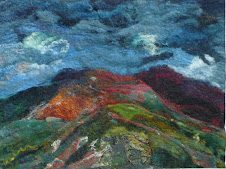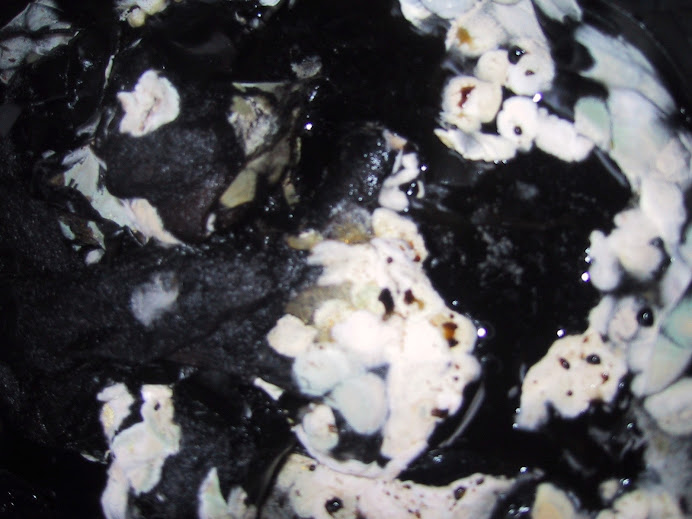
Today has been one of those days that happen occasionally when everything nice seems to happen. I went to visit a centre in Ruthin ,a nearby medieval market town , called the Chiron Centre ( website up soon)and took with me two of my pictures. The sense of peace and a beautiful space was quite overwhelming. beautiful wood beams, wattle and daub walls painted gentle creams . Every window showed stunning views, one over the medieaval buildings of Ruthins market place with a view of distant hills beyond one way , and a view of complex roof shapes with the outline of the Clywdian hills against the sky the other. Angela who has opened this glorious place for meetings, gatherings, alternative therapy, yoga etc has offered me an exhibition and two workshops in the new year. Then I return to find that I have two lovely comments on my blog. I have been loving my blog it is keeping my mind focussed, however having lovely supportive and informative comments too is the icing on the cake. Thank you Bettina. Leena and also Leigh who hasen't popped into today but has many times over the past two weeks.Onto the alder. It seems to be that a lot of iron is needed to get the black, as apparently three were statutes about it use as black because of its effect on fibres.20-25kg or alder bark are added to iron filings with 6 litres of vinegar to 1lb of rusty iron with one twentieth of the liquor being decanted three times a day and poured back in -presumably to aerate it. Thsi was left for at least a month. ( Dominque Cardon Natural Dyes p426. I must read Jenny Jeans recipe for blacks becasue she has a number in her latest book and she did a lot of research on the medieval blacks. My trouble is is that as I dye very fine fibres ( merino64's and 100's ) I neither want to do a lot of overdyeing as it felts nor do I want a lot of iron as it destroys. hum!May be I ask too much! And I quite want it to be local too so alder would be very nice. I was so interested to read Leena's comment tha the leaves were use for a tonic for the animals- so often dyes and natural medicines seem to go together. Black is not only difficult in natural dyes though my GP mentioned to me that she often sees people who have a skin reaction to synthetic black dyes as there are very few. Just to cheer us all up I have uploaded a photo of my boiled madder from the chips that gave that fantastic red. The only thing is that the photo come out quite pink in colour when really it is burnt orange . It was heated overnight but at just under the simmer. I was surprised to see it still had so much colour but it was in soak for at least a week between being used for the red and oranges and being used again.



























I have an old finnish dyebook from year 1919 and I looked up what it said about black and also it said alder bark with iron. The only other dye recipe in it was logwood with iron. Have you thought about logwood? Or is it that you want something local?
ReplyDeleteDo you have heather (Calluna vulgaris) near? I have gotten from it with iron very dark green.
And another idea, sometimes I dye dark grey wool or natural black wool with indigo and get dark (bluish) black.
This was what came to my mind when I thought about black, not an easy color:)